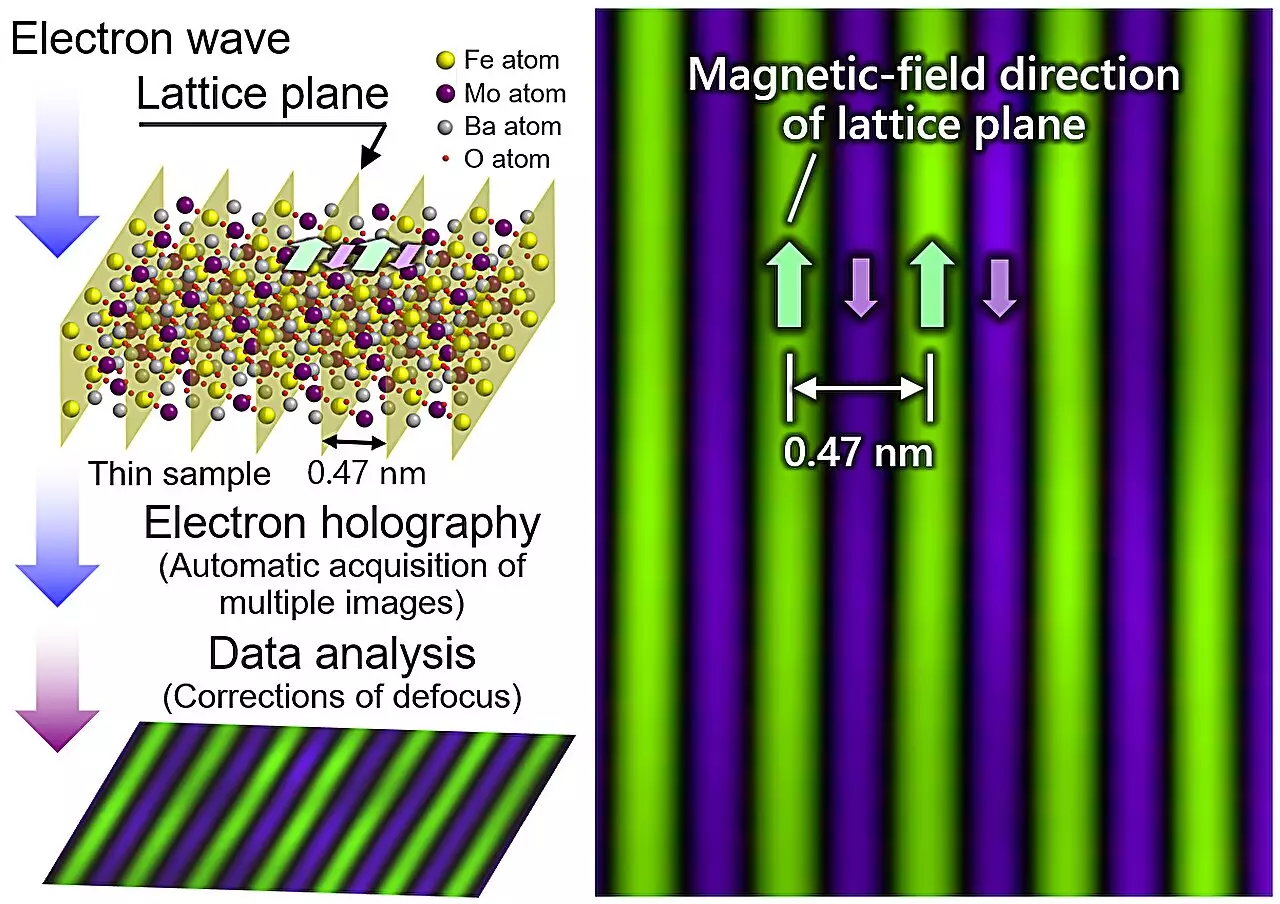

In a groundbreaking development, a research team from Japan has made significant progress in observing magnetic fields at incredibly small scales. This achievement is the result of collaboration between scientists from various institutions, including Hitachi, Ltd., Kyushu University, RIKEN, and HREM Research Inc., among others.
Understanding magnetic fields at the atomic level is crucial for the development of high-performance materials with tailored characteristics. The orientation and strength of magnetic fields within crystalline solids play a vital role in determining their properties. By visualizing the magnetic fields of individual atomic layers, researchers can gain valuable insights into the behavior of materials and the physical phenomena that govern them.
Prior to this breakthrough, the maximum resolution for observing the magnetic fields of atomic layers was limited to around 0.67 nm. However, through a collaborative effort, researchers have managed to surpass this limit. By utilizing Hitachi’s atomic-resolution holography electron microscope with advanced image acquisition technology and defocus correction algorithms, the team achieved a remarkable resolution of 0.47 nm.
One of the key innovations that enabled this breakthrough was the automation of control and tuning during data acquisition. This significantly sped up the imaging process and allowed researchers to obtain clearer images with distinct electric and magnetic field data. Additionally, the correction for minute defocusing was crucial in ensuring that the acquired images were free of aberrations, making it easier to discern the positions and phases of atoms.
The successful observation of magnetic fields at such small scales has far-reaching implications for both scientific research and technological advancements. By being able to directly observe magnetic lattices in materials, researchers can uncover hidden phenomena and gain a deeper understanding of electron spin configurations in magnetic materials. This breakthrough opens up new possibilities for investigating interfaces, grain boundaries, and other crucial areas in various materials and devices.
The research team anticipates that their achievement will lead to significant progress in diverse fields, from fundamental physics to the development of next-generation devices. The use of atomic-resolution holography electron microscopes is expected to contribute to the creation of high-performance magnets and highly functional materials essential for decarbonization and energy-saving efforts. Ultimately, this breakthrough could play a pivotal role in realizing a carbon-neutral society.
The breakthrough in observing magnetic fields at unimaginably small scales represents a significant milestone in scientific research and technological innovation. By overcoming technical challenges and pushing the limits of observation, researchers have unlocked new opportunities for advancing our understanding of materials and developing solutions to pressing societal challenges.
In the realm of software development, the ability to swiftly and accurately address bugs is…
The realm of quantum computing and communication is not just an abstract dream anymore; it…
In a remarkable leap for the field of material science, a collaborative research initiative has…
Throughout Earth's vast history, our planet has endured five major mass extinction events that reshaped…
Rainfall is a vital element of our planet’s hydrological cycle, yet many aspects of its…
On a night when the universe aligns, a mesmerizing phenomenon awaits: the appearance of the…
This website uses cookies.